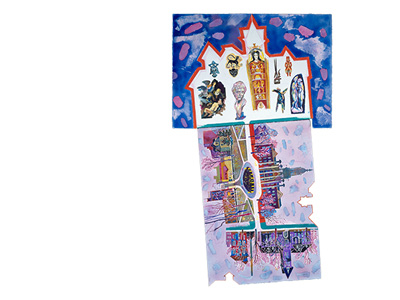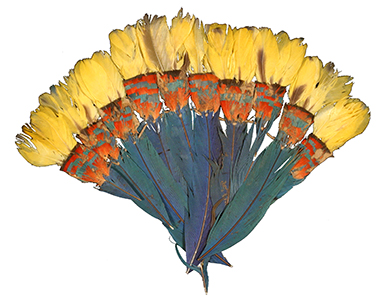
The Museum of Art and Archaeology and Overview, Keith Crown, American, 1993, Watercolor on paper, 93.3
Collections Management & Ethics
The Museum of Art and Archaeology’s (MA&A) Collections Management Policy sets forth its obligations and legal and ethical responsibilities regarding the acquisition, care, and use of its collection. It is interpreted to be consistent with MA&A's Mission Statement and Code of Ethics, and collectively these documents establish the framework for all procedures relating to MA&A’s collections.
The Code of Ethics is based upon the principle that MA&A serves as a public trust in its role as preserver of human culture and heritage and in its presentation of its materials with accuracy, honesty, and sensitivity. As an integrated part of the University of Missouri System, MA&A adheres to all MU and System policies, including those relating to ethics. MA&A also adheres to the American Alliance of Museum’s code of ethics and to all applicable legal instruments governing ownership, title, import, care, and other issues related to the acquisition, curation, and disposition of artistic and cultural materials. Museum employment involves great responsibility and MA&A employees must act with integrity and in accordance with stringent ethical principles and the highest standards of objectivity and fairness.

Feather Plume, Peru, circa 1000 CE, Feathers and string, 85.208, Anonymous gift
Provenance
Nazi Era
The Museum of Art and Archaeology (MA&A) does not hold any objects in its collection which are believed to have been improperly alienated from that object’s rightful owners during the Nazi era. Recognizing the importance of this issue, however, and in order to help individuals seeking lost objects, the MA&A has voluntarily listed all works in the collection which were produced before 1946, acquired after 1932, and which changed hands in Central Europe during the Nazi era (1933-1945), in a central information registry that meets the standards established by the Presidential Advisory Commission on Holocaust Assets in the United States and the Association of Art Museum Directors. This registry, the Nazi Era Provenance Internet Portal (NEPIP), is available at http://www.nepip.org/.
MA&A is committed to continually identifying and implementing the highest ethical standards of museum practice. Researchers studying provenance and related issues are welcomed. MA&A also adheres to the American Alliance of Museum’s acquisitions guidelines regarding material which is or might reasonably be thought to be looted or stolen during the Nazi era.
MA&A is committed to continually identifying and implementing the highest ethical standards of museum practice. Researchers studying provenance and related issues are welcomed. MA&A also adheres to the American Alliance of Museum’s acquisitions guidelines regarding material which is or might reasonably be thought to be looted or stolen during the Nazi era.
Cultural Property Issues
MA&A will not knowingly acquire unprovenanced antiquities or objects likely to encourage the illicit trade in antiquities. In accordance with the American Alliance of Museums, the MA&A adheres to the practice that acquisitions of antiquities have the required documentation that the object was in the United States or had left its country of origin by November 17, 1970, the date on which the UNESCO Convention on the Means of Prohibiting and Preventing the Illicit Import, Export and Transfer of Ownership of Cultural Property was signed.
To promote public trust and accountability, the Museum of Art and Archaeology makes its Collections Management Policy, Code of Ethics, and related policies publicly accessible.